HR Strategy Questions of the Week
Succession Planning: How Can We Prepare for Exits of Key Employees?
Last Updatedin HR Strategy, Videos Question of the Week
Company Holiday Party Considerations – Pay, Safety, Inclusivity
Last Updatedin Benefits & Compensation, Employee Relations, HR Compliance, HR Strategy Question of the Week
Future-Proofing Your Workforce: The Power of Upskilling, Reskilling, and Skills-Based Hiring
Last Updatedin HR Strategy, Recruitment, Training & Development, Videos Question of the Week, Video
Finding the Right HR Solution: PEO and Outsourced HR Pros and Cons
Last Updatedin HR Strategy Question of the Week
NFP Workforce Reductions: Plan Ahead for Economic Shifts
Last Updatedin HR Strategy Question of the Week
The Top Seven Handbook Policies to Include This Year
Last Updatedin HR Compliance, HR Strategy Question of the Week
Do I Need HR?
Last Updatedin HR Strategy Question of the Week
Six Key Leadership Attributes for Your Leadership Development Plan
Last Updatedin HR Strategy Question of the Week
Hiring Tips: How to Prevent a Bad Hire
Last Updatedin HR Strategy, Recruitment, Training & Development Question of the Week
How Can HR Play a Strategic Role in My Organization?
Last Updatedin HR Strategy Question of the Week
What are the Best HR Practices for the End of the Year?
Last Updatedin HR Compliance, HR Strategy, Recordkeeping Question of the Week
Why Overcoming Unconscious Bias Is Key to Your Organization’s Success
Last Updatedin HR Strategy Question of the Week
Are You Ready For These Top HR Trends in 2024?
Last Updatedin HR Strategy Question of the Week
What Are Unemployment Voluntary Contributions?
Last Updatedin HR Strategy Question of the Week
Understanding the Importance of Organizational Analysis
Last Updatedin HR Strategy Question of the Week
5 Key Points To Use Assessments in the Employee Life Cycle
Last Updatedin Employee Relations, HR Strategy Question of the Week
Building A DEI&B Roadmap
Last Updatedin HR Strategy Question of the Week
How will AI impact the Human Resources function?
Last Updatedin HR Strategy Question of the Week
HR’s Role During An Economic Crisis
Last Updatedin HR Strategy Question of the Week
How to Develop a Strategic Plan for Your Business
Last Updatedin HR Strategy Question of the Week
How To Turn Reactive Solutions Into Necessary Change
Last Updatedin HR Strategy Question of the Week
Corporate Social Responsibility
Last Updatedin HR Strategy Question of the Week
Leader vs. Manager
Last Updatedin HR Strategy Question of the Week
What is an HR Scorecard and how is it implemented?
Last Updatedin HR Strategy Question of the Week
Human Resources Assistance Needed
Last Updatedin HR Strategy Question of the Week
Getting Through Change
Last Updatedin HR Strategy Question of the Week
Competency Based Culture
Last Updatedin HR Strategy Question of the Week
The Balanced Scorecard Approach
Last Updatedin HR Strategy Question of the Week
Understanding The Options Like a PEO, ASO, or HRO to Grow Your Human Resources Function
Last Updatedin HR Strategy Question of the Week
Make Your Strategy Work
Last Updatedin HR Strategy Question of the Week
Why Is It Important To Get An Employee’s Signature?
Last Updatedin HR Strategy, Recordkeeping Question of the Week
What is HR’s Role in the Mergers & Acquisitions Process?
Last Updatedin HR Strategy Question of the Week
Mental Health Concerns in the Workplace
Last Updatedin Benefits & Compensation, Health, Safety & Security, HR Strategy Question of the Week
Strategies for Managing Change in Your Organization
Last Updatedin HR Strategy Question of the Week
The ABC’s of Diversity, Equity, and Inclusion (DE&I)
Last Updatedin HR Strategy Question of the Week
Performance Management Plan: The Individual Strategic Plan
Last Updatedin HR Strategy Question of the Week
How Your Corporate Social Responsibility (Or the Lack of It!) Will Impact Your Business
Last Updatedin HR Strategy Question of the Week
Why Should We Provide Civility Training at Our Company?
Last Updatedin HR Strategy Question of the Week
Systemic Racism: How Can I Fight It?
Last Updatedin HR Strategy Question of the Week
How to Tackle the Challenges of Scaling a Business
Last Updatedin HR Strategy Question of the Week
An Internal Review of Human Resources – The HR Audit and Organizational Analysis
Last Updatedin HR Strategy Question of the Week
10 Key Areas of HR to Review as You Begin the New Year
Last Updatedin HR Strategy Question of the Week
Developing a Retention Strategy
Last Updatedin HR Strategy Question of the Week
What Is the Business World Doing to Support the Sandwich Generation?
Last Updatedin HR Strategy Question of the Week
Project Management for HR Projects
Last Updatedin HR Strategy Question of the Week
Contact Us
Clark Schaefer Strategic HR
10856 Reed Hartman Hwy
Suite 225
Cincinnati, OH 45242

Clark Schaefer Strategic HR is recognized by SHRM to offer Professional Development Credits (PDCs) for SHRM-CP® or SHRM-SCP® recertification activities.
The information provided on this website does not, and is not intended to, constitute legal advice; instead, all information, content, and materials available on this site are for general informational purposes only. Readers of this website should contact their attorney to obtain advice about their particular situation and relevant jurisdiction. This website contains links to other third-party websites. These links are only for the convenience of the reader, user or browser; Strategic HR does not recommend or endorse the contents of the third-party sites.




